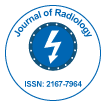Salivary Gland Tumor in Parapharynx Space, Radiologic Evaluation by the Way of Two Cases and Literature Reviewed
Received Date: Jun 29, 2023 / Published Date: Jul 31, 2023
Abstract
The neoplasms of the Parpharyngeal Space (PPS) is rare 0.5% - 1% of all head and neck tumors [1]. The PPS is an inverted cone-shaped region that extends from the skull base to the hyoid bone. A complex structure called the tensorvascular- styloid fascia, divides the PPS into the prestyloid and poststyloid compartments. The PPS can be involved by four different types of neoplastic lesions: primary tumors (benign or malignant), metastatic lymph nodes, lymph node involvement by lymphoproliferative diseases, and tumors arising from adjacent sites that secondarily extend into the PPS [2-4].
Some 50% of the neoplasms arise from the deep lobe of the parotid gland or minor salivary gland. These lesions are typically benign pleomorphic adenoma and involve the prestyloid compartment of the PPS . In the retrostyloid compartment, the most common tumours are neurogenic (schwannoma, paraganglioma, neurofibroma [5].
The goal of this paper is to report two cases of salivary gland tumours in PPS and the importance of imaging studies in the evaluation and differential diagnosis of tumors that involve it.
Citation: Medrano F, Palma YT, Matus R, Quezada C, Padilla R, et al. (2023) Salivary Gland Tumor in Parapharynx Space, Radiologic Evaluation by the Way of Two Cases and Literature Reviewed. OMICS J Radiol 12: 464. Doi: 10.4172/2167-7964.1000464
Copyright: © 2023 Medrano F, et al. This is an open-access article distributed under the terms of the Creative Commons Attribution License, which permits unrestricted use, distribution, and reproduction in any medium, provided the original author and source are credited.
Share This Article
Open Access Journals
Article Tools
Article Usage
- Total views: 1265
- [From(publication date): 0-2023 - Mar 29, 2025]
- Breakdown by view type
- HTML page views: 1047
- PDF downloads: 218
